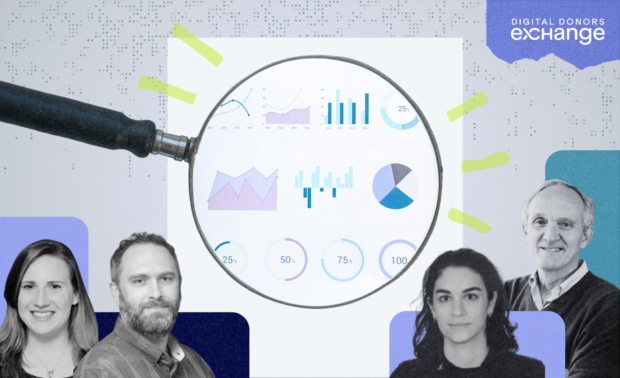Since 2019, the global digital development community has increasingly rallied around the concept of digital public goods (DPGs). DPGs have gained traction based on recognition of the unique promise of deploying open-source solutions for public impact, emphasizing their potential to deliver broad, equitable value at scale.
Today, principles like “Share, reuse, and improve“ — reaffirmed in the refreshed Principles for Digital Development — signal a deepened commitment to global digital collaboration. Conversations around good digital public infrastructure (DPI) have further emphasized the importance of DPGs, with countries increasingly seeing the value in open technologies as part of their national stacks.
At the same time, the field faces headwinds: funding is tightening, donor priorities are shifting, and many DPGs struggle to develop sustainable revenue models. Without stronger support structures, these tools risk stagnating just as they begin to demonstrate their transformative potential.
Thus, many of the core questions being asked in 2019 persist: What does it take to support these tools beyond the pilot phase? How do we enable meaningful reuse across different contexts? And what are the roles that donors, governments, and implementers should play to ensure that these systems don’t just exist, but are meaningful and accessible solutions in the digital public infrastructure context?
Given the increasing importance of this topic, we convened our Digital Donors Exchange community to unpack these questions. To kick off the conversation, we invited expert practitioners who have been thinking deeply about these issues:
- Ben Bertelsen, Digital Public Goods Product Specialist, UNDP’s Chief Digital Office
- Taylor Downs, Founder and CEO, OpenFN
- Gautham Ravichander, Director, Policy & Advocacy, eGov Foundation
The challenge of financing
Most DPGs are financially supported by philanthropic funding from multilateral banks or international development donors. A well-known and well-documented challenge for DPGs is the struggle to achieve financial independence and sustainability.
The discussion spotlighted a core tenet of open-source: the belief that the technology should be freely accessible – not trapped behind paywalls. As such, many DPGs shy away from the idea of achieving profitability, resulting in an over reliance of donor funding. Thus, when donor funding has dried up or shifted, many DPGs have been forced to wind down operations, which leaves the code no longer maintained and makes the product a risky choice.
DPG reliance on donor funding also creates a series of follow-on challenges:
- Governments need confidence that the DPGs they adopt will be maintained over time.
- Given their respective priorities in various sectors, many funders provide large-scale funding for siloed solutions. This leads to duplication of efforts and inefficiencies with precious funding dollars.
Recommendation: Support new business models.
To overcome this challenge, funding and support for new business models for DPGs is needed. The group discussed the various forms new business models could take, such as enterprise support packages, paywalls, and new pricing models based on offerings like services, training, and licenses. This requires donors to be open to new kinds of funding – not just funding software and lines of code but investing in the development of new revenue streams that allow DPGs to keep building and scaling sustainable products.
Making DPGs profitable isn’t only about improving their bottom lines. Importantly, these profit margins can be used to reinvest in the DPG itself and ensure the product will be operational into the future. The group highlighted the importance of investments in skills, hiring new staff, and the community at large. While much of the current funding for DPGs focuses on building new features, investing in a strong open-source community is essential to creating and maintaining a culture of sharing, reusing, and improving.
The challenge of conflicting incentives
There is a persisting tension around incentives between the supply side (the DPGs) and the demand side (the governments and non-profits that may use them).
The discussion dived into this tension from both sides. On the one hand, DPG product owners want to maximize reuse and reusability and build an ecosystem of DPG building blocks that can support generations of high-quality systems. DPGs, therefore, should be modular and highly specialized. On the other hand, Governments and many non-profits want end-to-end solutions. They prioritize complete service delivery – not just modular code components. And when DPGs try to meet this need, they face scope creep that detracts their focus.
Recommendation: Build a symbiotic local ecosystem.
The group agreed that DPGs should be focused and specific in what they do, and that a strong supporting ecosystem could reduce the tendency for DPGs to need to sprawl to become “anything apps” or do large-scale implementations. Key to this equation is building strong relationships between DPGs and the private market – especially systems integrators (SIs). Local SIs can connect the dots, piecing together the right DPGs to create end-to-end solutions for governments. Trust and collaboration between DPGs, governments, and private markets is key.
The challenge of capacity
Technology can be complicated, and open source even more so. Many governments lack the capacity to effectively adapt and adopt the technology to meet their needs. To build a stack of open-source components, governments need staff who understand how to fit these building blocks together, and essentially, how to tailor them to the specific context. They will also need a strong understanding of open-standards and APIs, and how these fit into regional and cross-border harmonization frameworks.
The discussion emphasized that the DPG ecosystem depends on a strong demand side to be part of the feedback chain. In a healthy ecosystem, users are sending feedback to the product owners, asking for updates, and helping to refine and improve the software. Their feedback is essential to iterating on and improving the products, ensuring they are fit-for-purpose and effective.
Recommendation: Strengthen government capacity to understand and run DPGs.
The idea of Open Source Centers of Excellence is not new – but still very much needed. An Open Source Program or Policy Office (or OSPOs) can define what is needed to build capacity within the local ecosystem. This includes working with universities to define the curriculum of the future and empowering local developers with the tools they need to build solutions. By linking long-term academic support and infrastructure with policy and political goals, OSPOs play a critical role in a government’s digital strategy.
Another strategy discussed was regional cooperation among peers, especially amongst smaller states and those with limited resources. Working together, these states can bring individual specializations or resources, and commit to a joint strategy of sharing, reusing, and improving. Open-source and DPGs are ripe for this type of collaboration, but this will also require strong geopolitical will, good relationships amongst regional counterparts, and close coordination.
What else needs to be done to ensure a bright future for DPGs?
The group rallied around two core areas that require continued efforts.
1. Making the case that DPI and DPGs are a more beneficial approach compared to others. More needs to be done to grow the evidence base of what open technologies can do – and why they may be a better choice. To make the case for DPGs and encourage continued investment in them, we must showcase how DPGs reduce costs, deliver services, and solve real problems.
2. For donors and other international institutions, there is a critical role to play in advising governments on strategy planning and technical architecture. This planning phase is an important moment to support governments in making critical decisions about their digital infrastructure. Having an objective voice review and advise a country’s vision and architecture before implementation can be extremely valuable to countries. Donors can serve as trusted advisors, offering an objective perspective on national strategies and technical architecture prior to implementation. They are also well positioned to connect the dots across the DPG ecosystem, helping governments navigate their procurement choices while leaving the product teams to build impactful solutions.
Sharing and reusing is at the heart of the open-source community and has propelled many DPGs to great success.
Successfully sustaining and scaling these solutions will require a more intentional, symbiotic relationship between the public sector, the open source ecosystem, and funders.
Governments and development partners benefit from open source solutions, but they also have a vital role in contributing back to products to strengthen the DPG ecosystem. To circumvent the free-rider problem, funders should identify the strategic levers that are needed in DPG adoption. Donors are well-positioned to play an orchestral role – supporting adoption and facilitating long-term maintenance and community contribution. Collectively, we need to move away from one-way, single deployments, to a shared stewardship model.





